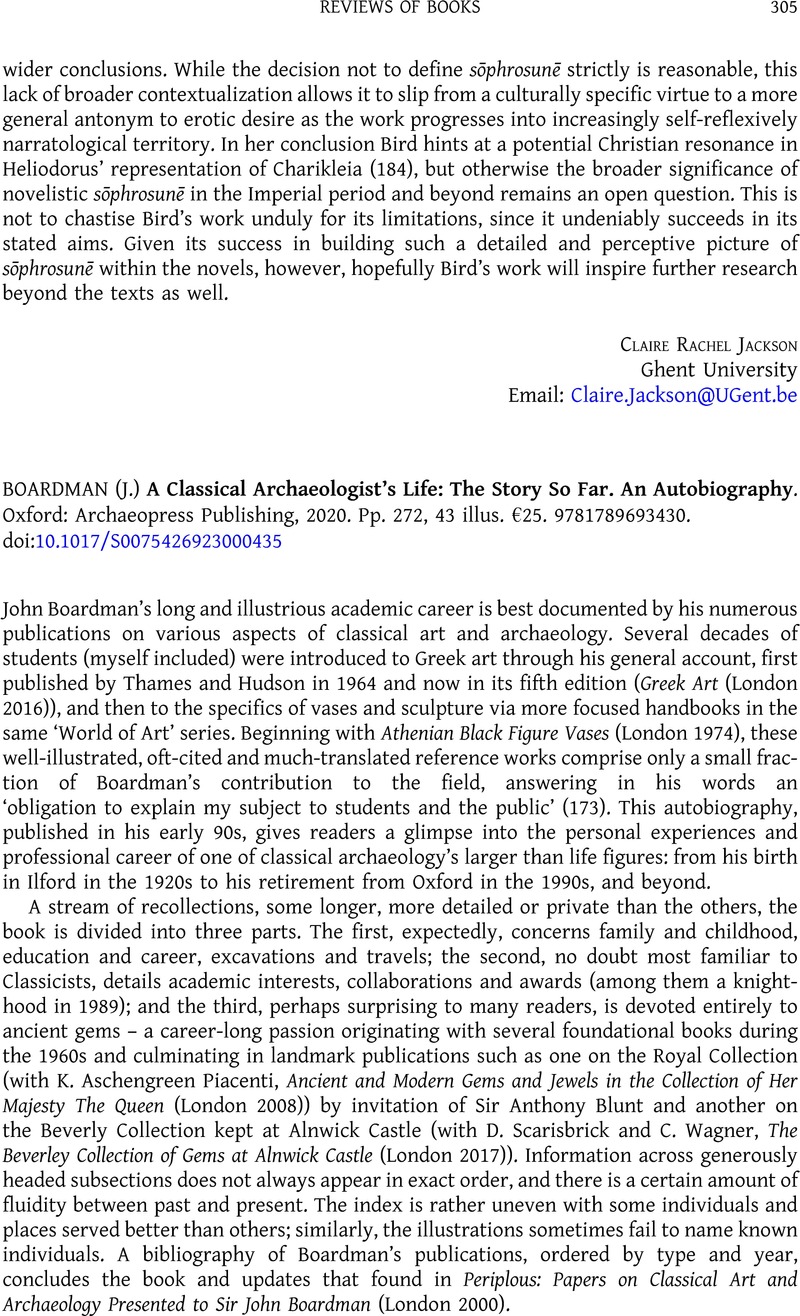No CrossRef data available.
Article contents
(J.) BOARDMAN A Classical Archaeologist’s Life: The Story So Far. An Autobiography. Oxford: Archaeopress Publishing, 2020. Pp. 272, 43 illus. €25. 9781789693430.
Review products
(J.) BOARDMAN A Classical Archaeologist’s Life: The Story So Far. An Autobiography. Oxford: Archaeopress Publishing, 2020. Pp. 272, 43 illus. €25. 9781789693430.
Published online by Cambridge University Press: 09 May 2023
Abstract
An abstract is not available for this content so a preview has been provided. Please use the Get access link above for information on how to access this content.

- Type
- Reviews of Books
- Information
- Copyright
- © The Author(s), 2023. Published by Cambridge University Press on behalf of the Society for the Promotion of Hellenic Studies


